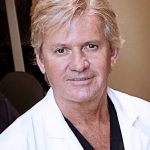Tummy Tuck Procedures Barrie, Ontario
It’s Time to Seriously Do Something About That Excess Around Your Tummy

No Matter How Much You Diet, No Matter How Many Sit Ups You Do, You Still Have That Tummy Bulge
Abdominoplasty is designed to flatten the abdomen by removing excess skin and fat and to tighten the muscles of the abdominal wall. It is an excellent procedure to correct excess abdominal skin and repair muscle laxity following childbirth, prior surgery, or as a result of significant fluctuations in weight.
You may be a good candidate for abdominoplasty if you have one or more of the following conditions:
- Excess or sagging abdominal skin
- An abdomen that protrudes and is out of proportion to the rest of your body
- Abdominal muscles that have been separated and weakened
- Excess fatty tissue that is concentrated in your abdomen
Recovery
After your surgery, Dr. Dickie will apply dressings to your incision. You will wear a removable compression garment in order to minimize swelling while supporting your abdomen as you recover for two weeks. Dr. Dickie may also place a temporary drain tube under the skin to drain any excess fluids that would otherwise collect around your incision. Typically patients can return to work after about two weeks. However, strenuous activity must be avoided for four to six weeks. After this time, you should be standing tall and confident with your new slimmer profile. Your scars will take approximately three to twelve months to fade and flatten.
For further information regarding Abdominoplasty, please refer to the Tummy Tuck tab under Body Contouring.
Dr. Kenneth Dickie, M.D., F.R.C.S. [C] • Board-Certified Plastic Surgeon
Dr. Kenneth Dickie, Director of the Royal Centre of Plastic Surgery, is a member of the Royal College of Physicians and Surgeons of Ontario and a member of both the American and Canadian Societies of Plastic and Aesthetic Surgery. As Chief of Plastic Surgery at Royal Victoria Hospital and a member of the teaching faculty of U. of T., Dr. Dickie will guide you in making the right decision.
Call Us 705.726.2800 • 1.855.726.2800
[iphorm id=”1″ name=”Default Sidebar Form 01″]
Frequently Asked Questions
[accordion align=”” numbers=”false” first_one_open=”false”]
[pane title=”Can exercise tighten the skin without abdominoplasty?”]Unfortunately no. Exercise is good for the mind and body in general, and toning the muscles can help fill out loose skin in the vicinity. By suppressing the appetite, and by slightly increasing the metabolism, exercise can assist weight loss. But there is no such thing as a “spot” exercise, to make the body lose weight in a certain area, nor to make the skin tighter. Excercise can increase muscle bulk, and that in turn can make skin look tighter in some areas, but exercise cannot tighten the loose abdominal skin. To date, only surgery can accomplish that.[/pane]
[pane title=”Is abdominoplasty a good way to lose weight?”]No, abdominoplasty is not a good method for weight loss. Not only is it less effective for people who are obese, but also the results are less than ideal, and there are increased risks for the significantly overweight person. The best candidates are those who have attained their correct body weight, and yet still have the abdominal problems which do not respond to further weight loss or exercise. After a consultation examination, Dr. Dickie often prescribes a diet program for overweight patients as preparation for abdominoplasty.[/pane]
[pane title=”Does abdominoplasty take care of cellulite?”]There is nothing mystical or special about “cellulite”, it is just fat, but it is fat located just under the skin, making a rippled look that is quite apparent. Abdominoplasty removes some of this cellulite fat also, but it is difficult to eliminate entirely. Weight loss by dieting is the best way. Sometimes, these skin irregularities can become more noticeable after abdominoplasty.[/pane]
[pane title=”Does abdominoplasty take care of stretch marks?”]Stretch marks are scars. They are produced by distension of the skin, but only in situations in which there are various hormones circulating, as in pregnancy and puberty. Those stretch marks located on the lower abdomen will be removed with the extra skin. Those located on the upper abdomen will be shifted downward as the skin is brought downward. The stretch marks that remain are tightened and smoothed out somewhat.[/pane]
[pane title=”Will abdominoplasty tighten up loose skin?”]Yes, that is one of the main purposes of abdominoplasty.[/pane]
[pane title=”What are the techniques of abdominoplasty?”]The excessive loose skin of the lower abdomen is removed, and the remaining skin is repositioned, stretched smooth, and tightened. Lower stretch marks are removed, and upper stretch marks are lowered down. Any low fat roll is removed or redistributed. The muscles are tightened and cinched together to accentuate the waistline. Sometimes liposuction is used as an adjunct procedure along with the abdominoplasty. Frequently, female patients may choose to have simultaneous breast enlargement via the navel leaving no additional scars, (or by other methods).[/pane]
[pane title=”Costs”]The fees for abdominoplasty by Dr. Dickie include preoperative testing, operating room, anesthesiologist, supplies, medications, dressings, surgeon’s fee, recovery room, overnight stay, and office checkups for 12 months, and the cost depends upon which surgical facility is used.
One can find surgeons offering lower fees for this surgery, and although lower fees do not necessarily mean that the surgeon is not experienced, there are several questions to which prospective patients must learn the answers:
- Is the surgeon certified by The Canadian Society of Plastic Surgeons or The American Society of Plastic Surgeons?
- Does the surgeon have considerable experience with the surgery?
- Is the surgical facility fully accredited for general anesthesia?
- Will there be an M.D. Anesthesiologist present?
- Will the surgeon be doing the surgery himself/herself?
- Can you be sure the surgeon is not just supervising trainees?
- Does the quoted fee include everything listed above?
You want to be certain the answer is yes to all of these before deciding.
All cosmetic surgery is prepaid, but various financing options are available. It is not appropriate for health insurance to cover cosmetic surgery, and abdominoplasty is almost always cosmetic surgery. In some rare situations, such as after massive weight loss, or presence of an abdominal hernia or similar problem, health insurance assistance may be appropriate, and only in such a case would Dr. Dickie submit abdominoplasty to a patient’s insurance company.
[/pane]
[pane title=”Where are the scars after abdominoplasty?”]There is always a scar around the navel. There is almost always a low horizontal scar across the lower abdomen just above the hairline. Sometimes there is also a short vertical scar above the pubic area. A person whose problem is only laxity of the muscles, rather than skin excess, may be able to have endoscopic abdominoplasty, leaving only the scar at the navel and a short scar above the pubic hairline.[/pane]
[pane title=”Can the problems come back after abdominoplasty?”]Fat cannot come back unless one gains weight again, in which case all body areas will share in the weight gain. However, after abdominoplasty the treated area has a permanently decreased capacity for additional fat, because so many of the fat cells have simply been removed. But there are still fat cells present, so some gain in that area is to be expected with weight gain. Skin stretches with the passage of time, and so as the years go by there will be more skin, and for the same reason the muscles will gradually stretch out again. Nevertheless, a better contour after surgery is in a sense permanent, in that no matter what the person’s age, the benefits remain.[/pane]
[pane title=”Is abdominoplasty surgery painful?”]Yes, moderately so, because of the tightening of the muscles that is almost always included. All the patients are given strong narcotic pills to take at home, and limit their activities accordingly.[/pane]
[pane title=”What is the recovery period after abdominoplasty?”]Recovery time depends on the individual, but usually follows a general pattern. For the first five to seven days, the patients take fairly strong pain medicine, usually a mild narcotic. During this time they generally stay at home, and they cannot drive a car or operate machinery. Near the one-week mark, when they are on milder medicine, they can start light exercise, such as walking, treadmill, stationary bike, but not impact exercises like running or aerobics. The second week, weights or exercise machines can be added, and then after three weeks, running and aerobics can be done. The point at which work can be resumed depends upon how the work activities fit into the progression described above, and this is individualized. Dr. Dickie often recommends that an elastic binder be worn for varying lengths of time.[/pane]
[/accordion]

